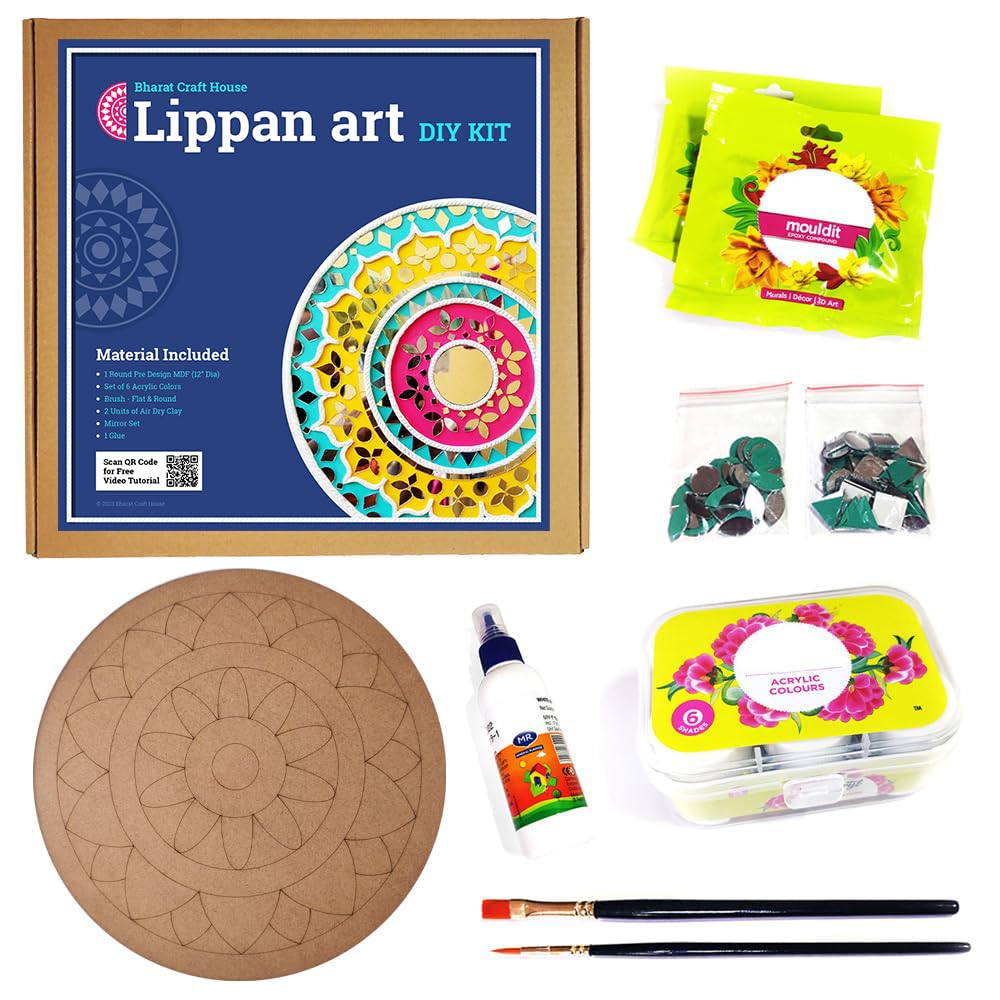Lippan art, also known as mud and mirror work, is a traditional mural craft from Kutch, Gujarat, in India. This art form embodies the cultural essence with its simple yet enchanting designs made from mud and mirrors, capturing the attention of art enthusiasts worldwide. For artists aspiring to delve into this craft, it is vital to have a clear understanding of the essential materials required. This article will guide you through the basics of the materials needed for Lippan art, their usage, and maintenance tips.
Foundation Materials for Lippan Art
The base of Lippan art is as important as the decorative elements. A sturdy foundation ensures the longevity and durability of the artwork.
Preparing the Base
The first step in creating a Lippan artwork is to prepare a strong base, typically a wooden board or a stiff canvas, depending on the size of the mural. It should be smooth and free of any dirt or grease, as these can interfere with the adhesion of the mud mixture.
The Mud Mixture
Traditionally, artists use a mixture of camel dung, clay, and cotton fibers to make the mud base. However, for practical reasons, contemporary artists often replace camel dung with more accessible materials like chalk powder or sand. Mixing this with an adhesive binder like white glue or a cellulose-based adhesive can create a mud-like paste ready for crafting.

Decorative Elements in Lippan Art
The charm of Lippan art comes from its intricate designs and the interplay of mirrors with the mud relief work. The decorative materials you choose will define the aesthetic of your finished piece.
Variety of Mirrors
Small, round, diamond-shaped, or even irregularly shaped mirrors are integral to Lippan art. These mirrors, known as ‘Aabhla’ in the local language, are available in various sizes and should be chosen to suit the design’s scale and complexity.
Adding Color and Texture
While traditional Lippan art is monochromatic, modern interpretations sometimes incorporate colors. For adding pigment, natural or acrylic colors work well with the mud mixture. Textural elements like beads, sequins, or threads can also be included to enhance the tactile quality of the mural.
Tools for Shaping and Detailing
Precision in crafting Lippan art comes from the tools used to shape and detail the mud mixture. The right tools will allow you to manipulate the medium precisely to create your desired patterns.
Shaping Tools
Basic sculpting tools, such as spatulas, carving tools, and even simple household items like plastic cutlery, can shape the mud mixture on the base. For more detailed work, artists can use finer tools like dental picks or sculpting needles.
Smoothing and Finishing Implements
Once the design takes shape, various smoothing tools are employed to refine the surface. Flat palette knives, rubber shapers, or even fingers are used to smooth out the mud mixture, ensuring a clean application around the mirrors and design elements.
Preserving and Displaying Lippan Art
Once your Lippan art piece is complete, proper preservation and display are essential to maintain its beauty and integrity over time.
Sealing the Artwork
To protect the mud work from moisture and dust, it is advisable to seal the piece with a clear varnish or sealant. This not only preserves the art but can also give it a subtle sheen, elevating the overall look.
Framing and Mounting
Displaying Lippan art with a complementary frame can greatly enhance its visual appeal. Consider the artwork’s size and weight when selecting a frame and mounting system. Ensure the frame is secure and provides adequate support for the piece.
Embracing the Lippan Craft
Lippan art is a celebration of tradition and creativity, capturing the essence of Kutch’s rich culture. By gathering the right materials and employing meticulous techniques, you can create stunning Lippan murals that resonate with traditional charm and contemporary appeal. Whether you are a seasoned artist or a curious beginner, understanding and sourcing the essential materials is the first step in your Lippan art journey. As you craft each piece, you’ll not only preserve a time-honored art form but also contribute to its evolving narrative in the modern world of art.